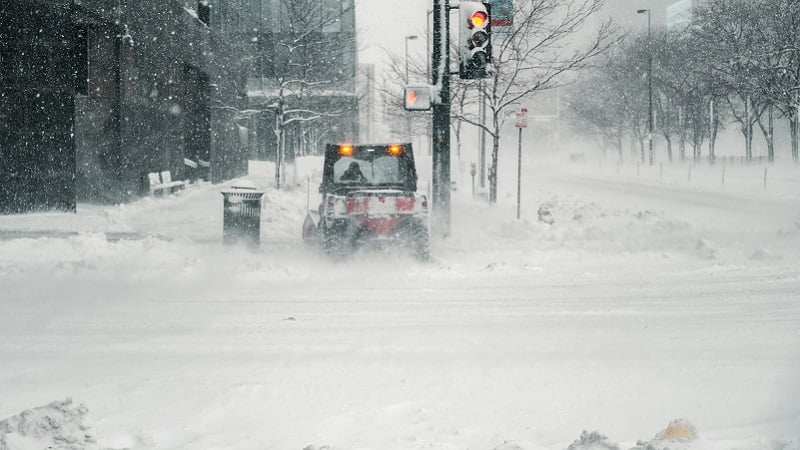
No matter whether in the south of Germany, in the low mountain ranges, in Berlin or on the coast: the past days and weeks must have been cruel. Anyone who followed the weather reports must have been terrified. Digitalization, which is destroying journalism, is to blame for this. A comment.
Hallelujah! Almost everywhere in Germany it has double-digit temperatures again. This means: We can finally breathe through our noses in peace again and bring our heartbeat to a normal level. This break is also urgently needed, because who knows when the next snow chaos is literally just around the corner.
At this point I would like to emphasize right away: Snow and ice represent a serious danger. This applies both to drivers and to people who have to walk or cycle to work in adverse weather conditions. My intention is explicitly not to trivialize this danger. Rather, it's about reporting weather reports.
What is this “winter” anyway?
In order to get to the bottom of the problem of reporting weather reports, we first have to look at what this ominous winter actually is. According to Wikipedia, it is the “coldest of the four seasons”.
And further:
Phenologically, the onset of winter can differ significantly from the astronomical one and, in addition to the land-sea distribution (maritime vs. continental climate), is often marked by the beginning of a permanent snow cover.
We summarize:
- Winter is cold – and for a longer period of time. After all, winter lasts almost three months.
- In winter there is snow and ice. Due to the colder temperatures, the rain or water freezes and the physical state changes.
So it's completely normal and by no means unusual for snow to fall from the sky in winter and stay there. This can also be the case for several days or weeks.
Weather report reporting: There used to be more snow
Nevertheless, the last few days and weeks have shown that snow and ice have apparently disappeared from general memory or at least from the memories of the journalists responsible for reporting weather reports.
There is no other way to explain the fact that, to put it bluntly, a state of emergency and school closures are declared just because it is either raining a lot or a maximum of five to ten centimeters of fresh snow has fallen. In fact, the winter phenomenon occurs less frequently.
This is shown by a study by the German Weather Service. In December 2022, he analyzed whether there really was more snow before. To do this, the DWD compared the snowfall (snow cover of at least three centimeters) in the period between 1961 and 2021.
And in fact there were 65 percent fewer snow days below 300 meters in 2021 than 60 years before. At altitudes above 700 meters the decline is significantly smaller at 30 percent. There was very little snow, especially in the last decade from 2010. The German Weather Service also draws the conclusion: “Yes, with a few restrictions there used to be more snow.”
Digitalization is destroying weather reporting
If we leave all sarcasm aside, even the youngest journalists are of course still familiar with snow and ice. What will happen to our children and grandchildren in 20 or 50 years is another question. Currently, editors and route planners at Deutsche Bahn should firmly expect that winter will come again every year.
So why this unspeakable scaremongering? This problem is largely self-inflicted. Although it is well known, publishers have not found a (really good) solution for financing digital journalism. The paywall as a hard solution scares many people away. So all that remains is to finance advertising via banners and in-text ads.
But in order for advertisers to pay the money, the content must also be seen. And how does that work? To put it simply, by taking everything to the extreme. “5 centimeters of new snow expected” doesn’t attract any readers. “Horror winter: overnight snowfall endangers the region” is much more impressive.
In order to survive in the shark tank of online journalism, more and more editorial teams are resorting to distorting the truth when reporting weather reports in order to attract fear-driven people and thus make money.
The question of credibility
Anyone who is not read disappears from the digital map. That's why even supposedly serious media outlets abandon normal weather reporting and resort to radical puns and frightening formulations. What used to only be the case BILDnewspaper was imaginable, it is now normal in all daily newspapers and national media.
It is understandable that money is important for survival. However, if the media only misleads their readers and forces clicks at all costs, journalism loses its standing. However, this “fourth estate” is essential, especially in times when political groups are becoming increasingly radical.
Good, reliable reporting is the backbone of a functioning society. The journalists uncover grievances and provide information about what is happening. Information and education should come first. This also applies to reporting weather reports.
In order not to completely lose credibility, the media and media makers should urgently stop dramatizing everything. Otherwise there is much more at stake than just a few clicks.
This post is a comment. This journalistic style reflects the author's opinion. Comments are neither objective nor representative of the entire editorial team.
Also interesting:
Source: https://www.basicthinking.de/blog/2024/01/25/wetterbericht-erstattung-digitalisierung-journalismus-kommentar/


